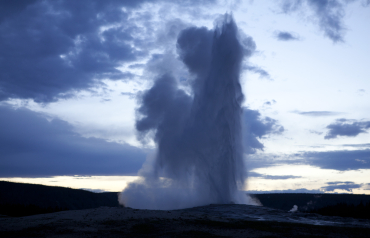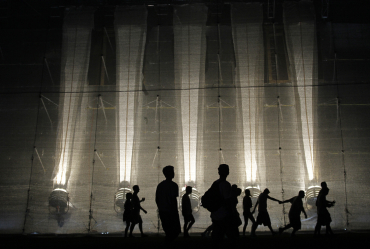
With protests against the Wall Street spreading from New York to other American cities, demonstrators have found a new slogan: "We are the 99 per cent".
This points to an economic struggle between 99 per cent of Americans and the richest one per cent, who are increasingly accumulating a greater share of the national wealth.
Let us have a look at the share of the super-rich Americans.
Image: A view of the Statue of Liberty in New York.
Photographs: Lucas Jackson/Reuters

1. Top one per cent of Americans own 40 per cent of nation's wealth
Next four per cent own 27 per cent wealth
Next 10 per cent own 12 per cent wealth
Next five per cent own 11 per cent wealth
The bottom 80 per cent own just seven per cent
25 years ago, the top one per cent owned 33 per cent wealth
Image: An aerial of New York City.
Photographs: Lucas Jackson/Reuters

2. Top one per cent takes home 24 per cent of national income
While the richest one per cent of Americans takes home almost a quarter of national income today, in 1976 they took home just nine per cent - meaning their share of the national income pool has nearly tripled in roughly three decades.
Image: A general view of Los Angeles from Griffith Park.
Photographs: Mario Anzuoni/Reuters

3. Top one per cent owns half of the country's stocks, bonds and mutual funds
The Institute for Policy Studies illustrates this disparity in financial investment ownership, noting that the bottom 50 per cent of Americans owns only .5 per cent of these investments.
Top one per cent owns half of the country's stocks, bonds and mutual funds
The next nine per cent owns 39.4 per cent of stocks, bonds and mutual funds
The next 50-90 per cent owns 9.3 per cent of stocks, bonds and mutual funds
The bottom 50 per cent owns 9.3 per cent of stocks, bonds and mutual funds
Image: A girl plays with a giant bubble as the sun sets at Moonlight Beach in Encinitas, California.
Photographs: Mike Blake/Reuters

4. Top one per cent has only five per cent of nation's personal debt
Top one per cent has five per cent of the nation's personal debt, while the bottom 90 per cent has 73 per cent of total debt
Top one per cent has 20 per cent deposits
The next nine per cent has 38 per cent deposits
The bottom 90 per cent has 42 per cent deposits
Image: Old Faithful Geyser erupts in Yellowstone National Park, Wyoming.
Photographs: Reuters

Top one per cent has 14 per cent pension accounts
The next nine per cent has 45 per cent pension accounts
The bottom 90 per cent has 41 per cent pension accounts
Image: Girls run through a field of giant tecolote ranunculus flowers in Carlsbad, California.
Photographs: Mike Blake/Reuters

Top one per cent has 22 per cent life insurance
The next nine per cent has 33 per cent life insurance
The bottom 90 per cent has 45 per cent life insurance
Image: With the New York skyline behind them, people play a game of ultimate frisbee in Weehawken, New Jersey.
Photographs: Gary Hershorn/Reuters

Top one per cent has five per cent debt
The next nine per cent has 21 per cent debt
The bottom 90 per cent has 73 per cent debt
Image: Concert goers attend the Coachella Valley Music and Arts Festival in Indio, California.
Photographs: Mike Blake/Reuters

5. Top one per cent is taking in more of the nation's income than at any other time since the 1920s.
Not only are the wealthiest one per cent are taking home a tremendous portion of the national income, but their share of this income is greater than at any other time since the Great Depression.
Image: Queen of Endymion waves before Mardi Gras Day in New Orleans, Louisiana.
Photographs: Sean Gardner/Reuters

Share of national income distribution:
From 1923 to 1929: Top one per cent took 70 per cent of the nation's income. The bottom 90 per cent took 15 per cent.
From 1960-69: Top one per cent took 65 per cent of the nation's income. The bottom 90 per cent took 11 per cent.
From 1976-79: Top one per cent took 48 per cent of the nation's income. The bottom 90 per cent took 36 per cent.
From 1982-89: Top one per cent took 41 per cent of the nation's income. The bottom 90 per cent took 26 per cent.
From 1992-2000: Top one per cent took 43 per cent of the nation's income. The bottom 90 per cent took 39 per cent.
From 2002-2007: Top one per cent took 64 per cent of the nation's income. The bottom 90 per cent took 12 per cent.
Image: Three surfers catch a large wave in Haleiwa, Hawaii.
Photographs: Hugh Gentry/Reuters
No comments:
Post a Comment